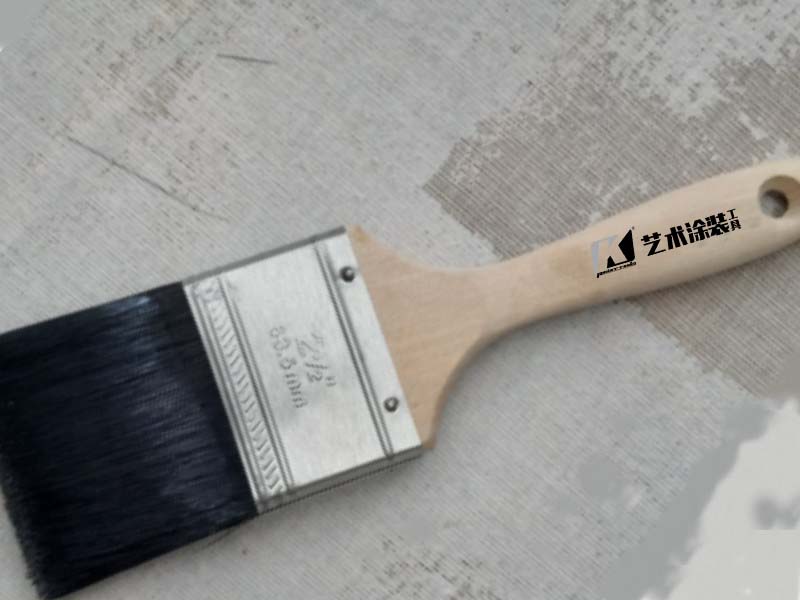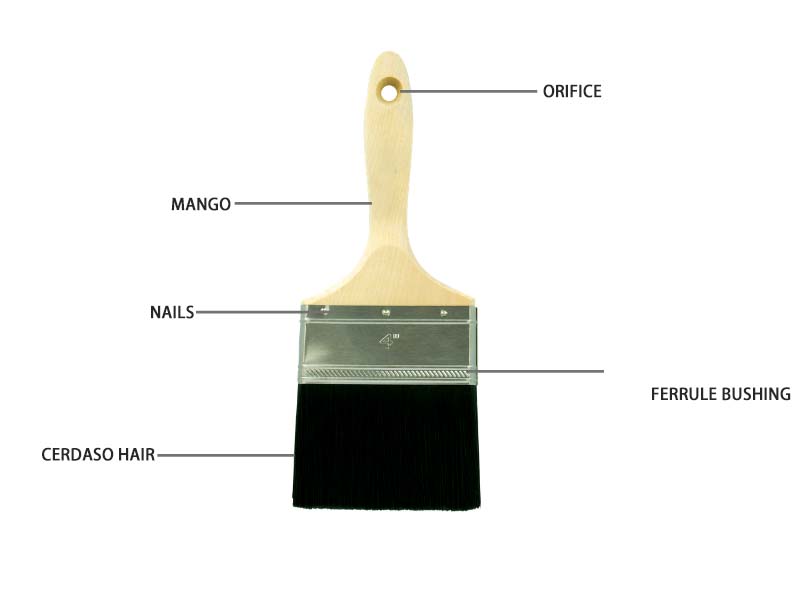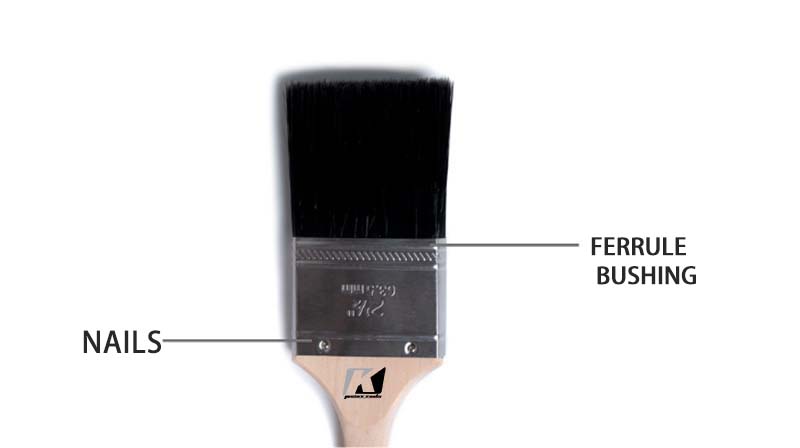HOW TO CHOOSE A BRUSH?

If we investigate the history of humanity and its connection with painting, it is probably possible to go back to the beginning to find how the techniques that began with the use of natural dyes, printed on rock walls, have been changing until the present day. where we find the most different types of paints and applicators.
The truth is that, for certain jobs and because of its ease of use, the brush is the most appropriate tool, therefore, below we will develop some general considerations that will allow us to get to know it and prepare ourselves for the next articles where we will delve into how to choose or which one to buy - depending on the work to be carried out.
To begin, we will describe below the parts that make up a brush or paint brush:

Parts of the paint brush
Handle of the Brush or Brush
It is the point of grip, the anchoring with the hand, therefore, among the most important considerations is ergonomics. That is, how comfortable it is at the time of use. An inappropriate design would make the brush uncomfortable, difficult to maneuver and, therefore, make the task difficult.
On the contrary, a well-designed handle allows the hand and the brush to be almost like a single body, therefore, the task will tend to be easier, better precision will be achieved and that will eventually result in better work. In addition, painting days are usually intense, it is essential to work comfortably.
As for the components of the brush handle, they are mostly available in wood or plastic. Actually, the most important thing, as we said, is ergonomics and grip. In the particular case of wood, it is essential that it be of a quality such that it does not arch or change its shape, for example, when exposed to water or humidity.
Finally, some manufacturers have decided to incorporate a hole or hole in the handle of the brush, which is very useful for transporting it, hanging it, drying the brush, or even to keep it identified, for example, by assigning a colored ribbon that identifies it. and link to a certain task.
Ferrule or cap of the Brush or Brush
The function of the ferrule of the brush is to keep the bristles attached to the handle. That is to say, it is a fundamental piece. In the past, the brush caps were made of some flexible wood, such as bamboo, however, little by little they were replaced by materials such as sheet metal, copper, rubber or, what is even better, stainless steel.
Although the advantage of a material that resists oxidation and corrosion is obvious, since it is a somewhat more expensive material, not all manufacturers include it. It is very common to find materials of inferior quality in the market.

Ferrule Nails – Parts of the Brush
Now, there is a detail on which we propose to pay special attention, it is that we have seen on several occasions that, despite the fact that the ferrule is made of INOX, the nails that hold it firm in the handle are not. This seems like a detail, but it is not so much if we consider that, if the nail fails, the brush can completely lose its usefulness. So, keep this point in mind when choosing the brush!
And while we are in the details, we have seen in some cases an idea that can be very useful for those who go deep into the details. It is that when choosing the brush, the measure is fundamental, of course that "By Eye" one can know more or less what the measure is, in any case and not to fail, we have seen some models that incorporate in the ferrule the measure of the paint brush. In this way, it is easier to maintain order at work.
Bristles or hair of the Brush or Brush
Here we come across a topic of fundamental importance, because, although all the elements that make up the brush are important, none is as important as the bristles or hair. A stainless steel ferrule, or a comfortable handle, is useless if we later find that the bristles do not fulfill the function.
In general, we find models of brushes with natural bristles, mixed (eg a proportion of natural bristles and the rest synthetic) or completely synthetic. In addition, the density of the bristles is a key factor when choosing.
Each of these factors has its advantages and disadvantages. Logically, it always depends on the work to be done and the budget available. We will cover this topic in depth in a future article.
Some recommendations that we must always keep in mind to give the brush a longer useful life:
1. When using latex-type paints, wash the brush with warm soapy water immediately after finishing the job;
2. For oil-based paints, clean the brush first with the paint manufacturer's recommended solvent or thinner, then wash with warm, soapy water immediately after use;
3. Do not let the brush soak for long periods of time;
4. For best results and longer brush life, comb the bristles when they are dry.















